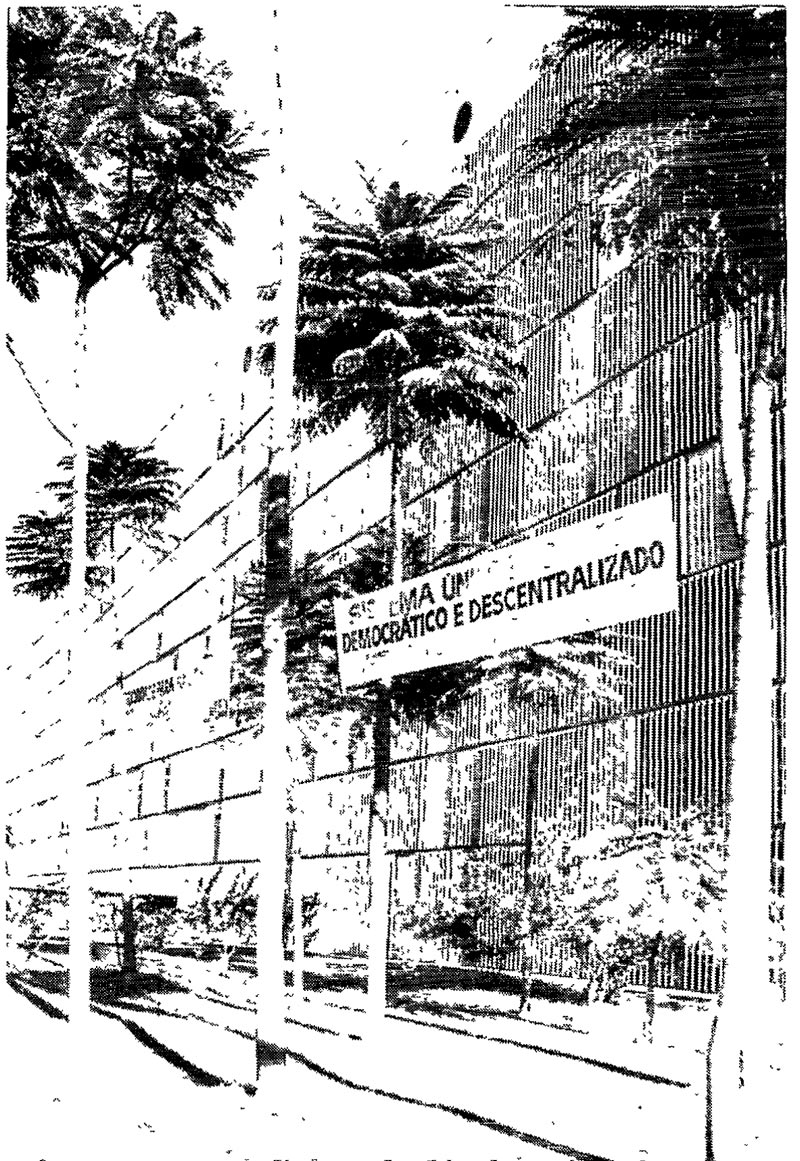
Reproduction Jornal da Constituinte
Facsimile of a note published in Issue No. 49 of the Jornal da Constituinte, on issues regarding deployment of the Unified Health SystemReproduction Jornal da ConstituinteAmong the chief advancements provided by the Constitution, Article 196 is one of the most celebrated: “Health is a right of all and a duty of the State…” Prior to the creation of the Unified Health System (SUS), only workers with formal employment and no debt owing to Social Security were entitled to publicly funded medical care. When the new constitution went into effect healthcare became a right guaranteed to all citizens by the state; today, more than 160 million Brazilians depend solely on the public system.
In analyzing SUS’s operations with an eye to the past, a few specific features stand out, observes political scientist Marta Arretche, from the School of Philosophy, Languages and Literature, and Human Sciences of the University of São Paulo (FFLCH-USP). One unique aspect is the relationship between the public and private sectors. During the National Constituent Assembly, the resistance to implementing SUS was overcome by an alliance between the Brazilian Health Reform Movement (MRSB), which led the campaign for universal access to healthcare, and the private sector. “Contrary to what happened in most of the countries that created a public health system, in Brazil, SUS doesn’t compete with the private sector. The public system became a buyer of private services, and doctors can be hired both by SUS and by private medical insurance companies,” explains Arretche.
Another unique feature brought about by the Constitution was the decentralization of management of healthcare services and functions. The Ministry of Health, the national manager of the system, becomes responsible for driving public policy and transferring resources so that states and municipalities can execute the agreed-upon directives. Surrounded by uncertainty at the time of its installation, the architecture of this innovative arrangement was slow to become established. “The healthcare system didn’t become truly universal until the late 1990s, due to Basic Operational Standard 98, which better defined the responsibilities of municipalities. This allowed those who hadn’t yet entered the system to get signed up,” Arretche says.
Financing, on the other hand, remains one of the main concerns for the system’s sustainability. The constitutional regulations for the transferring of funds to healthcare underwent modifications during the 1990s until the introduction of Constitutional Amendment No. 29 in 2000, which regulated the financial obligations of the federal government, states, and municipalities for the health sector. In 2018, with a budget of approximately R$131 billion, the Ministry of Health continues to face difficulties in managing what the World Health Organization (WHO) estimates to be the world’s largest free universal healthcare system. “It’s one thing to create a constitutional text saying that every citizen has the right to healthcare,” observes Arretche. “It’s another, very different thing for the state to produce public policies that guarantee those rights. That’s why it’s still been a huge challenge to deliver on the promise that all Brazilians can have access to a basic health plan.”
Republish
